Hims Hair Growth: Ever stared in the mirror, running your fingers through thinning hair and wondering if hope exists? You’re not alone. Hair loss can be a deeply personal struggle that impacts confidence and self-image. The good news is that modern hims hair loss treatment options have revolutionized how we approach hair growth challenges.
Navigating the world of hair restoration might seem overwhelming, but breakthrough telehealth services like Hims have made professional hair loss treatment more accessible than ever. With innovative approaches tailored to individual needs, you can now explore personalized solutions from the comfort of your home.
This comprehensive guide will walk you through cutting-edge strategies for achieving longer, thicker hair. Whether you’re experiencing early signs of hair thinning or seeking proactive growth techniques, we’ll uncover practical solutions that blend scientific research with real-world effectiveness.
Understanding that every hair journey is unique, we’ll explore diverse approaches to hair growth. From nutritional insights to advanced medical treatments, our goal is to empower you with knowledge that transforms your hair health and restores your confidence.
Table of Contents
Understanding Hair Growth: The Basics
Hair growth is a complex process that affects everyone differently. Your hair goes through a journey of growth, rest, and renewal. This journey can be influenced by many factors. Knowing these basics can help you find better hair thinning solutions and keep your hair healthy.
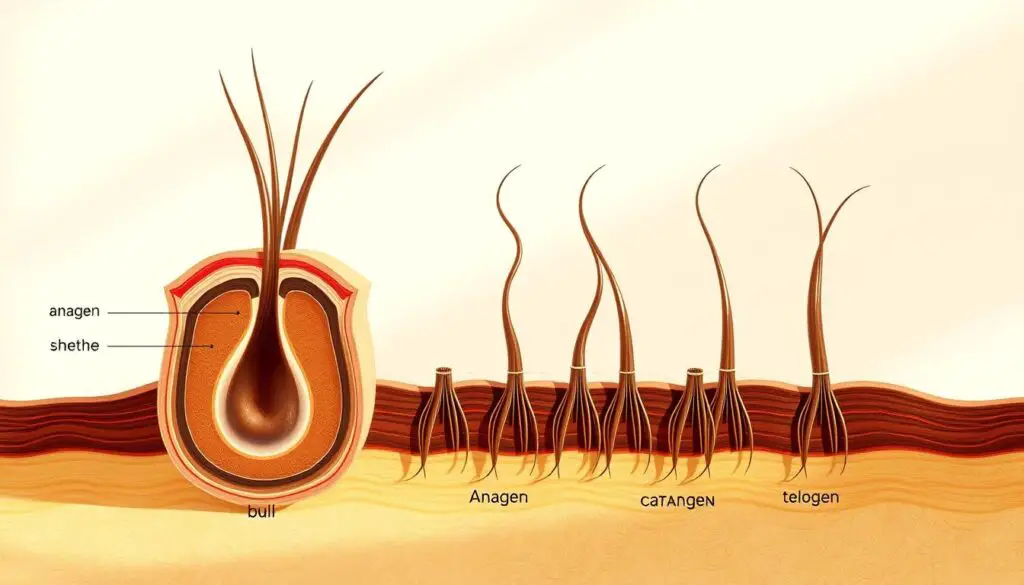
Hair growth isn’t simple. It involves a complex cycle with different phases. These phases affect your hair’s health and look.
The Hair Growth Cycle
Your hair has three main stages:
- Anagen (Growth Phase): Active hair growth lasting 2-7 years
- Catagen (Transition Phase): Short period where hair follicles shrink
- Telogen (Resting Phase): When old hair falls and new hair starts to grow
Factors Affecting Hair Growth
Many things can impact your hair’s health:
- Genetics
- Hormonal changes
- Nutrition
- Stress levels
- Scalp massage techniques
“Your hair’s health is a reflection of your overall wellness.” – Dermatology Research Institute
Common Myths About Hair Growth
There are many myths about hair growth. A scalp massage can help by improving blood flow. But, it’s not a quick fix for hair thinning. Getting professional advice is key to understanding your hair growth challenges.
By grasping these basic principles, you can take a more focused approach to keeping your hair healthy.
Nutrition: The Key to Healthy Hair
Fueling your hair growth starts from within. Your diet is key to healthy, vibrant hair. Nutritional support can make your hair stronger, thicker, and look better.

Essential Vitamins for Hair Growth
Biotin supplements are a big help for those wanting better hair health. They give important nutrients for hair follicle strength and growth. Key vitamins for strong hair include:
- Vitamin A: Helps produce scalp sebum
- Vitamin C: Supports collagen production
- Vitamin D: Stimulates hair follicles
- Vitamin E: Provides antioxidant protection
Protein’s Role in Hair Health
Protein is the main building block of hair. Keratin shampoos help strengthen hair, but eating enough protein is crucial. Since hair is about 90% protein, it’s vital to eat enough protein.
“Nutrition is the foundation of healthy hair growth” – Hair Health Expert
Foods That Promote Hair Growth
Good nutrition greatly affects hair health. Add these nutrient-rich foods to your diet:
- Eggs: Rich in biotin and protein
- Salmon: Packed with omega-3 fatty acids
- Spinach: Contains iron and vitamins
- Sweet potatoes: High in beta-carotene
While biotin supplements help, a balanced diet is best for healthy hair growth.
Scalp Care: Promoting a Healthy Environment
Your scalp is key for healthy hair. Keeping it in top shape is vital for strong, vibrant hair. Learning scalp care can help you create the best environment for hair growth.
Importance of Scalp Health
A healthy scalp means better hair. About 60% of Americans deal with hair thinning. Regular scalp massage boosts blood flow, helping nutrients reach hair follicles.
Exfoliating Your Scalp
Scalp exfoliation gets rid of dead skin and buildup. Here are some tips:
- Use gentle exfoliating scrubs weekly
- Choose keratin shampoos with natural exfoliants
- Massage scalp during cleansing
Best Oils for Scalp Nourishment
Some oils can greatly improve scalp health:
| Oil Type | Benefits | Application Frequency |
|---|---|---|
| Jojoba Oil | Balances natural scalp oils | 2-3 times per week |
| Tea Tree Oil | Reduces inflammation | Once weekly |
| Coconut Oil | Deep conditioning | 1-2 times per week |
“Healthy scalp, healthy hair – it’s that simple.”
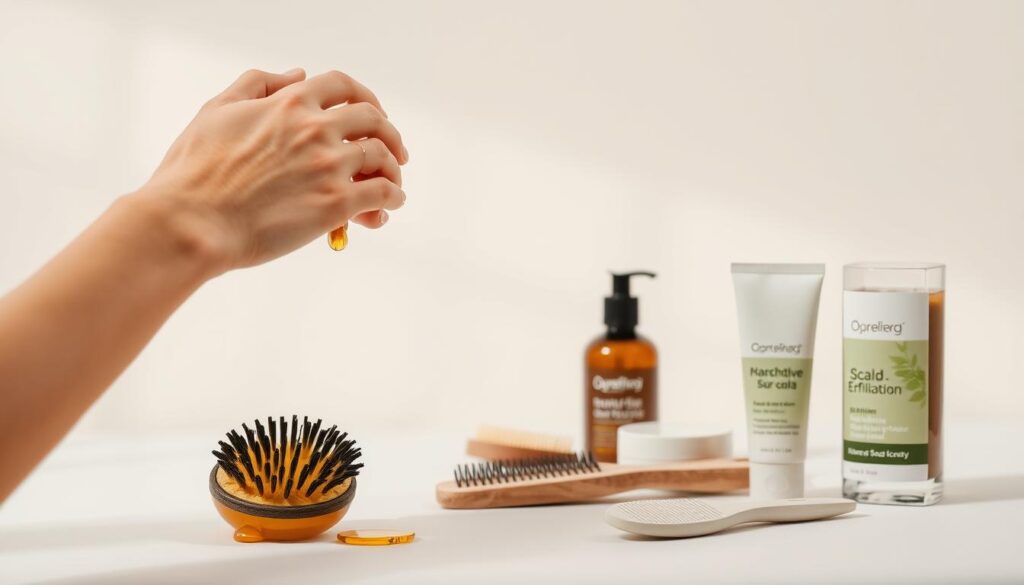
Using scalp massage and keratin shampoos helps hair grow better. Regular care makes hair stronger and more resilient.
Hair Care Routine: Dos and Don’ts
Creating a good hair care routine is key to having healthy, shiny hair. It’s important for those dealing with thinning hair or wanting to boost hair health. Knowing the right techniques can really help.
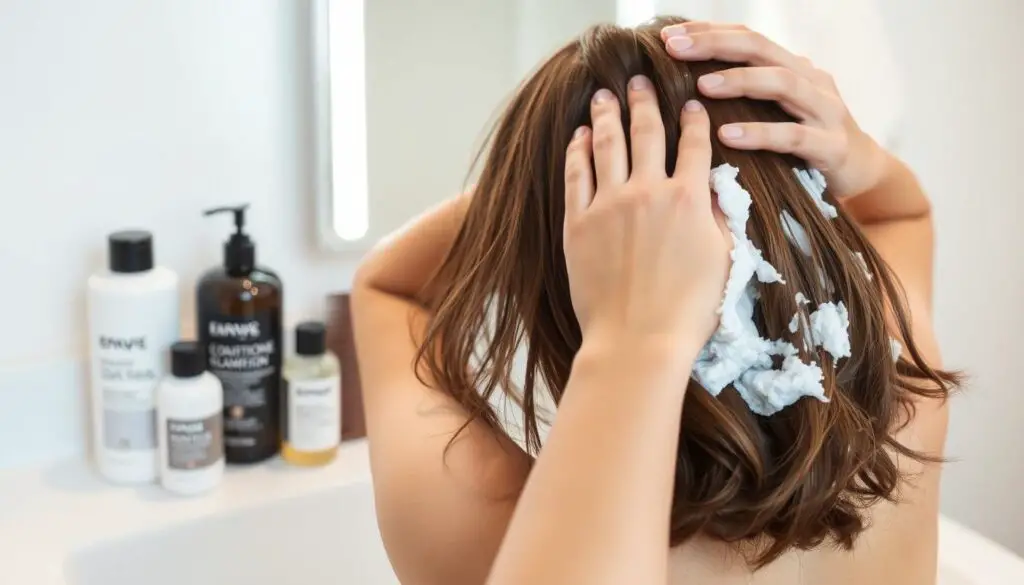
Your hair care should fit your needs, especially for thinning hair or using keratin shampoos. Here are some top tips for keeping your hair in great shape.
Shampooing Tips for Healthy Hair
- Choose keratin shampoos that match your hair type
- Avoid washing hair daily to prevent natural oil stripping
- Use lukewarm water to protect hair cuticles
- Massage scalp gently while shampooing to stimulate circulation
Conditioning Techniques
Good conditioning is vital to avoid hair damage and help with thinning. Here are some important steps:
- Apply conditioner from mid-length to ends
- Use a wide-tooth comb to distribute product evenly
- Leave conditioner for 3-5 minutes before rinsing
Avoiding Heat Damage
| Heat Styling Tool | Recommended Temperature | Protection Needed |
|---|---|---|
| Flat Iron | 350-375°F | Heat protectant spray |
| Curling Iron | 300-350°F | Thermal protection serum |
| Blow Dryer | Below 410°F | Low heat setting |
“Protect your hair like you protect your skin – prevention is always better than cure.” – Hair Care Expert
Pro tip: Invest in quality keratin shampoos and always use heat protection to maintain hair health and prevent unnecessary damage.
Natural Remedies for Hair Growth
Looking into natural hair growth products can change your hair game. Nature has amazing solutions that can boost your hair care routine. These can help your hair grow from the roots.

Scalp massage and natural ingredients are key for hair health. Let’s explore some amazing plant-based solutions for better hair care.
Aloe Vera: Nature’s Conditioner
Aloe vera is a top natural hair treatment. It’s packed with nutrients that offer many benefits:
- Soothes scalp inflammation
- Reduces dandruff
- Promotes healthy hair growth
- Conditions and strengthens hair follicles
“Nature’s most powerful hair care ingredient might be sitting in your garden” – Hair Care Experts
Castor Oil: A Time-Tested Solution
Castor oil has been a go-to for hair growth for ages. It’s full of ricinoleic acid, which is great for scalp health and hair growth. Using castor oil on your scalp can:
- Improve blood circulation
- Stimulate hair follicles
- Reduce hair breakage
- Nourish hair roots deeply
Peppermint Oil for Enhanced Circulation
Peppermint oil is a strong natural remedy for hair growth. Its cooling effect and ability to boost circulation make it perfect for scalp massage. Just a few drops can wake up dormant hair follicles and make your hair healthier and more vibrant.
Styling Tips for Fuller Hair
Dealing with hair thinning can be tough, but the right styling can make your hair look fuller. Smart styling choices are key to achieving this look. They go beyond medical treatments.
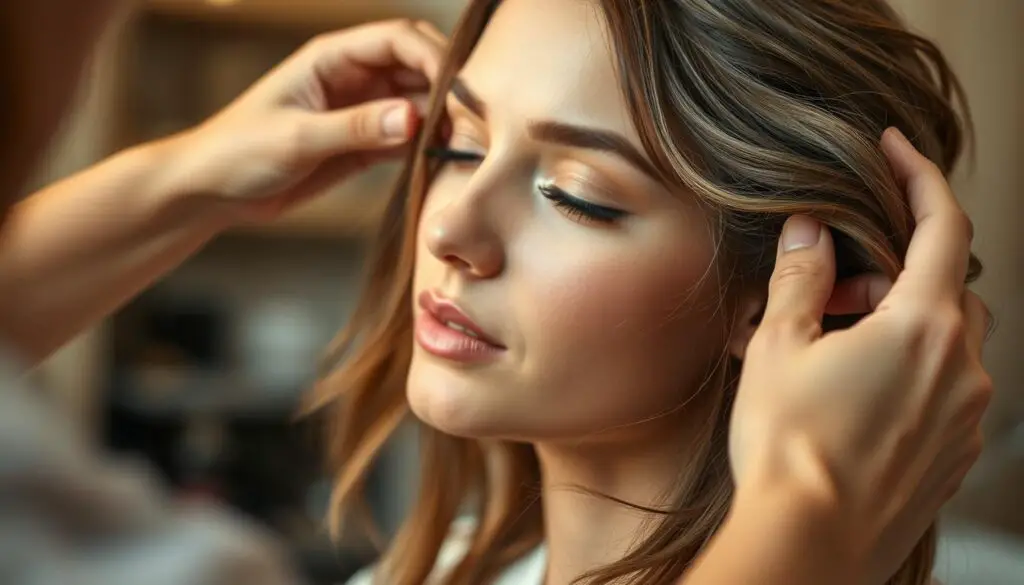
Choosing the Right Haircut
Your haircut is crucial in managing hair thinning. Here are some tips:
- Opt for shorter styles that create volume and texture
- Choose layered cuts that add dimension
- Avoid long, flat hairstyles that emphasize thinning areas
Techniques for Voluminous Styles
Stylists suggest several ways to make your hair look fuller:
- Blow-drying with a round brush to create lift at the roots
- Using volumizing products specifically designed for thin hair
- Experimenting with strategic hair parting to minimize visible thinning
“The right styling technique can transform the appearance of thinning hair, giving you confidence and a fuller look.” – Hair Styling Expert
Hair thinning solutions are not just about covering up. They’re about creating an illusion of thickness. Brands like Hims offer innovative products. These include specialized conditioners and hair dyes that blend and enhance your hair’s appearance, making thinning less noticeable.
Supplements: A Boost for Your Hair
Finding the right hair regrowth products can be tough. Supplements are a promising way to help your hair grow and fight hair loss. Knowing which supplements to choose can greatly improve your hair health.

By age 50, up to 50% of men face hair loss. Biotin supplements are becoming more popular to help. They are key in making hair stronger and possibly growing more.
Popular Hair Growth Supplements
- Biotin supplements for strengthening hair follicles
- Multivitamin complexes targeting hair health
- Specialized hair growth formulations
Hair regrowth products vary, each focusing on different hair health aspects. Look for these important ingredients:
| Supplement | Key Benefits | Recommended Dosage |
|---|---|---|
| Biotin | Strengthens hair strands | 2.5 mg daily |
| Vitamin D | Supports hair follicle health | 600-800 IU daily |
| Zinc | Promotes hair growth | 8-11 mg daily |
Safety and Efficacy of Hair Vitamins
Not all supplements are the same. Quality is crucial when picking hair growth supplements. Talking to a healthcare professional can help find the best supplements for you.
“Patience and consistency are key when using hair growth supplements” – Hair Health Expert
Some people see good results with supplements. For example, Hims offers unique blends of finasteride, minoxidil, and vitamins to support hair health.
Supplements work best with a healthy lifestyle. This includes eating right, managing stress, and taking care of your hair.
Stress Management for Better Hair
Stress can harm your hair health, making it hard to find good hair loss treatments. It can mess up your hair’s natural growth cycle. This might cause more hair thinning and loss.
It’s key to know how stress affects your hair. When you’re stressed for a long time, your body makes more cortisol. This hormone can hurt your hair follicles.
The Link Between Stress and Hair Loss
Stress can cause three main types of hair loss:
- Telogen Effluvium: Stress makes hair follicles stop growing
- Alopecia Areata: A condition where stress makes your body attack hair follicles
- Trichotillomania: A disorder where stress makes you pull your hair
Techniques to Reduce Stress
There are ways to lower stress and help your hair:
- Try meditation every day
- Do exercise regularly
- Keep a steady sleep schedule
- Use deep breathing exercises
- See a professional counselor
“Managing stress is not just good for your mental health, but it’s also a critical component of maintaining healthy hair growth.” – Dermatology Research Institute
By focusing on stress management, you can improve your hair health. This approach works well with other hair loss treatments.
Hormonal Changes and Hair Growth
Hormones are key in your hair growth journey. Knowing how hormonal changes affect hair health is important. Life stages and biological changes can change your hair’s thickness and growth rate.
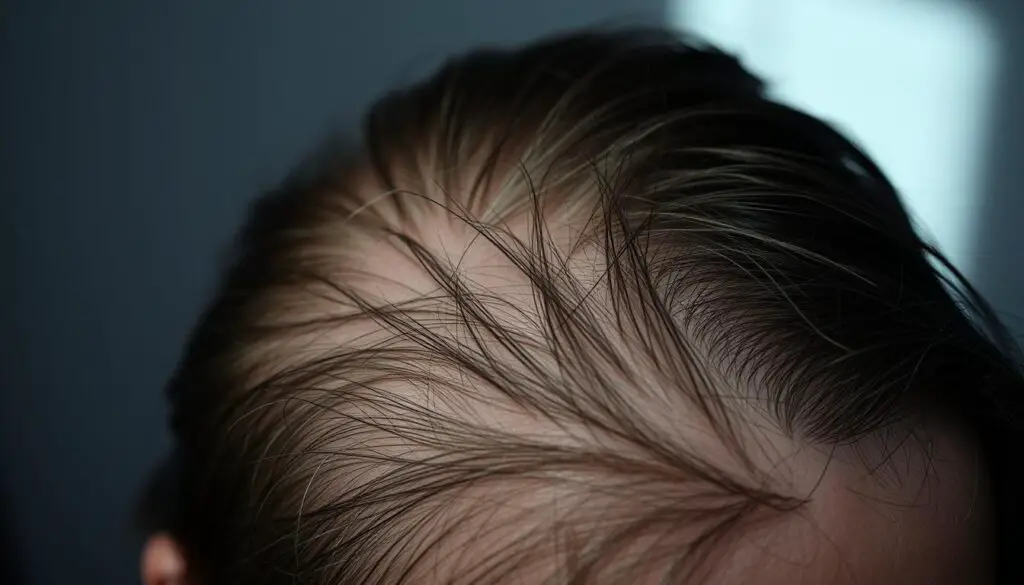
Hormonal shifts can cause hair growth problems. Your body’s hormonal mix affects hair follicles in surprising ways.
Male Hormonal Influence on Hair
Testosterone and dihydrotestosterone (DHT) affect male hair growth. Key points about hormonal hair loss include:
- DHT can shrink hair follicles
- Genetic predisposition increases hair loss risk
- Age-related hormonal changes accelerate hair thinning
Understanding Hormonal Hair Loss Mechanisms
Androgenetic alopecia, or male pattern baldness, is the main hormonal hair loss in men. It’s caused by sensitivity to DHT, leading to shrinking hair follicles.
| Hormone | Hair Growth Impact | Potential Treatment |
|---|---|---|
| Testosterone | Can convert to DHT | 5-alpha reductase inhibitors |
| DHT | Shrinks hair follicles | Finasteride |
| Cortisol | Stress-related hair loss | Stress management |
Managing Hormonal Hair Loss
Effective hair loss treatment includes:
- Consulting with healthcare professionals
- Exploring medical interventions
- Considering prescription medications
- Maintaining a healthy lifestyle
“Understanding your body’s hormonal signals is key to developing an effective hair preservation strategy.” – Dr. Michael Roberts, Dermatology Specialist
While hormonal changes can affect hair health, many treatments exist. Proactive management and professional advice can help you deal with these complex processes.
Medical Treatments for Hair Loss
Hair loss can be tough, but modern treatments offer hope. They help restore hair’s thickness and vitality. Knowing your options is key to making good choices for your hair.
Prescription and over-the-counter solutions have changed hair loss treatment. They offer effective ways to fight hair loss, especially for men with pattern baldness. Minoxidil and finasteride are two main medications for this.
Over-the-Counter Solutions
Topical treatments are easy to find and use for hair restoration. Here are some over-the-counter options:
- Minoxidil spray and foam formulations
- Scalp serums with hair-strengthening ingredients
- Topical solutions containing multiple active compounds
Prescription Medications
Prescription treatments target hair loss more specifically. Finasteride is a scientifically proven solution for male pattern baldness.
| Medication | Type | Cost | Key Benefits |
|---|---|---|---|
| Finasteride | Oral Prescription | $22/month | Blocks DHT conversion, increases scalp hair |
| Minoxidil | Topical Treatment | $15-$26 | Stimulates hair follicle growth |
| Compound Treatment | Combined Formulation | $49 | Multiple active ingredients |
When looking at hair loss treatments, talk to healthcare professionals. They can help find the best option for you.
“Effective hair loss treatment is about finding the right solution for your unique situation.” – Hair Restoration Specialist
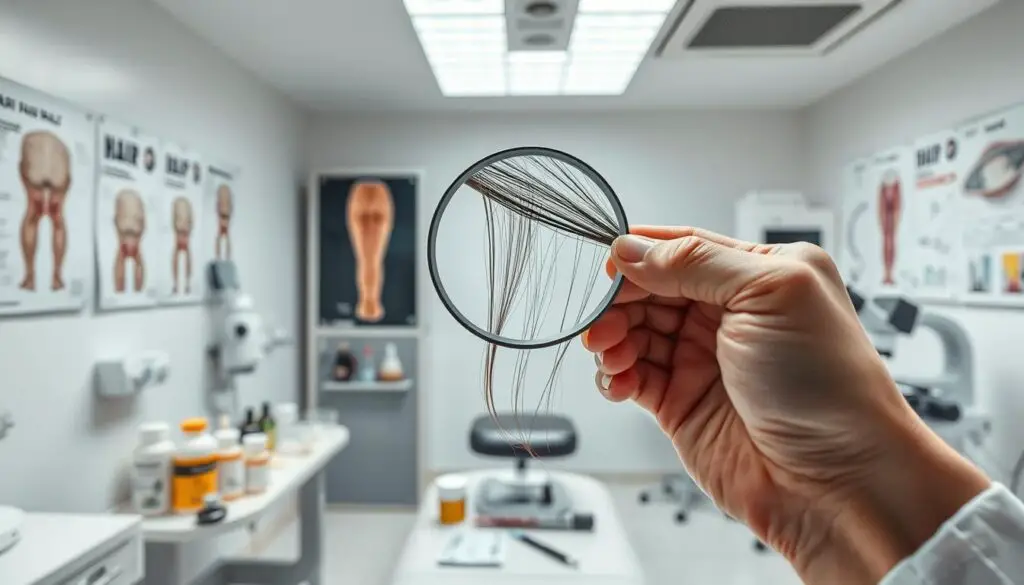
Remember, patience is key. Most treatments need 3-6 months before you see results. Individual responses to medications can vary. Keep track of your progress and talk openly with your healthcare provider.
Hair Transplant Options
When traditional hair loss treatments don’t work, a hair transplant offers a lasting solution. It’s a surgical method for those with significant hair loss. It helps them regain their confidence.
Hair transplant procedures have changed how we tackle hair loss. These modern surgical methods move healthy hair follicles to thin or bald spots. This way, they give natural-looking results.
What to Expect from a Hair Transplant
A typical hair transplant involves several key steps:
- Initial consultation with a hair restoration specialist
- Comprehensive scalp assessment
- Donor hair extraction from healthy areas
- Precise follicle transplantation
- Recovery and healing process
Pros and Cons of Surgical Solutions
It’s important to know all about hair transplant options before deciding:
| Pros | Cons |
|---|---|
| Permanent hair restoration | Higher upfront cost |
| Natural-looking results | Surgical risks |
| Long-term solution | Extended recovery period |
“A hair transplant can be a life-changing procedure for those experiencing significant hair loss,” says Dr. Michael Green, a leading hair restoration specialist.
Before getting a hair transplant, talk to a qualified expert. They can check your hair loss and suggest the best treatment. Remember that individual results may vary, and patience is key to achieving the best possible outcome.
Recognizing Hair Growth Issues
Knowing the signs of hair loss is key for early action and effective treatment. Hair thinning solutions work best when you spot problems early and act fast.
Hair loss isn’t always easy to spot. Different patterns can show different health issues or genetic traits. Spotting these patterns helps you find the right solution for you.
Common Hair Loss Patterns to Watch
- Receding hairline at the temples
- Thinning crown area
- Diffuse hair loss across the scalp
- Circular bald patches
- Sudden hair shedding
Red Flags That Require Professional Attention
Some hair loss signs need quick medical help. Watch out for these warning signs:
- Sudden or patchy hair loss
- Hair falling out in clumps
- Scalp inflammation or irritation
- Visible scalp scarring
- Hair loss with other health symptoms
When to Seek Medical Advice
Doctors can find the cause of your hair loss. You should see a doctor if home treatments don’t work or if your hair’s density changes a lot.
“Early detection is key in managing hair loss effectively” – Dermatology Experts
Now, you can get doctor advice online. Telehealth platforms offer easy virtual visits. They give you tailored hair loss treatment plans based on your condition.
Patience and Consistency: Key to Results
Getting hair to grow back needs a smart plan and steady effort. Your journey with hair growth products requires patience and clear goals.
Hair growth isn’t quick. People using hair growth products often see changes after months. Hair grows on its own schedule, so sticking to it is key.
Setting Realistic Expectations
Knowing about hair growth means accepting that results differ. Each treatment has its own timeline:
- Minoxidil treatments: Visible results in 3-6 months
- Finasteride: Noticeable improvements around 6-12 months
- Natural supplements: Slow changes over 4-8 months
Tracking Your Hair Growth Journey
Keeping track of your progress is vital when using hair growth products. Here are some ways to do it:
- Take monthly progress photos
- Measure hair thickness
- Keep a detailed journal of product usage
- Record any changes in hair texture
“Patience is not the ability to wait, but the ability to keep a positive attitude while waiting.” – Unknown
| Treatment Type | Average Results Timeline | Consistency Rating |
|---|---|---|
| Minoxidil | 3-6 months | High |
| Finasteride | 6-12 months | Very High |
| Natural Supplements | 4-8 months | Moderate |
Remember, your commitment to consistent hair regrowth products determines your ultimate success. Stay motivated, track your progress, and trust the process.
Seasonality and Hair Growth
Your hair’s health changes with the seasons, impacting hair thinning solutions and overall hair care strategies. Knowing how weather affects your hair can help you create a better hair care routine all year.
Seasonal changes can greatly affect hair growth and condition. Each season brings its own challenges that can change how your hair looks, feels, and stays healthy.
How Weather Affects Your Hair
Each season has its own hair care challenges. Research shows that seasonal changes can greatly impact hair health:
- Winter brings low humidity, making hair brittle
- Summer’s high humidity causes more scalp oil
- Fall leads to more hair shedding
- Spring introduces environmental allergens that affect scalp health
Seasonal Hair Care Adjustments
It’s important to adjust your hair thinning solutions with the seasons to keep your hair healthy. Here’s a guide to seasonal hair care:
| Season | Hair Care Recommendations |
|---|---|
| Winter | Use deep conditioning treatments, protect from dry air |
| Spring | Detox scalp, use lighter products, manage allergies |
| Summer | Apply UV protection, control scalp oil, hydrate |
| Fall | Nourish scalp, prepare for increased shedding |
*”Your hair is a reflection of your overall health and environmental conditions.”*
Experts suggest tracking how your hair reacts to seasonal changes. Approximately 50-100 hairs are naturally shed daily, but seasonal shifts can change this. By understanding these changes, you can adjust your hair care to reduce hair thinning and keep your hair healthy.
Conclusion: Your Path to Healthier Hair
Don’t let hair loss complicate your life. Hims offers a simple way to tackle hair loss. With over 50% of people experiencing thinning before 50, knowing your options is key.
Hair loss treatments have changed a lot. Now, with Hims, you can get help online. They use proven treatments like Finasteride and Minoxidil. Plus, they offer FDA-approved meds and free consultations.
Recap of Hair Growth Strategies
Getting healthier hair takes several steps. Eat right, manage stress, try medical treatments, and care for your hair. Hims combines meds with lifestyle tips for a complete solution. Remember, growing hair takes time and patience.
Encouragement for Your Journey
Be confident in your hair growth journey. Hair loss is tough, but Hims makes it easier. Stick to your treatment, live healthy, and trust in science for hair growth.
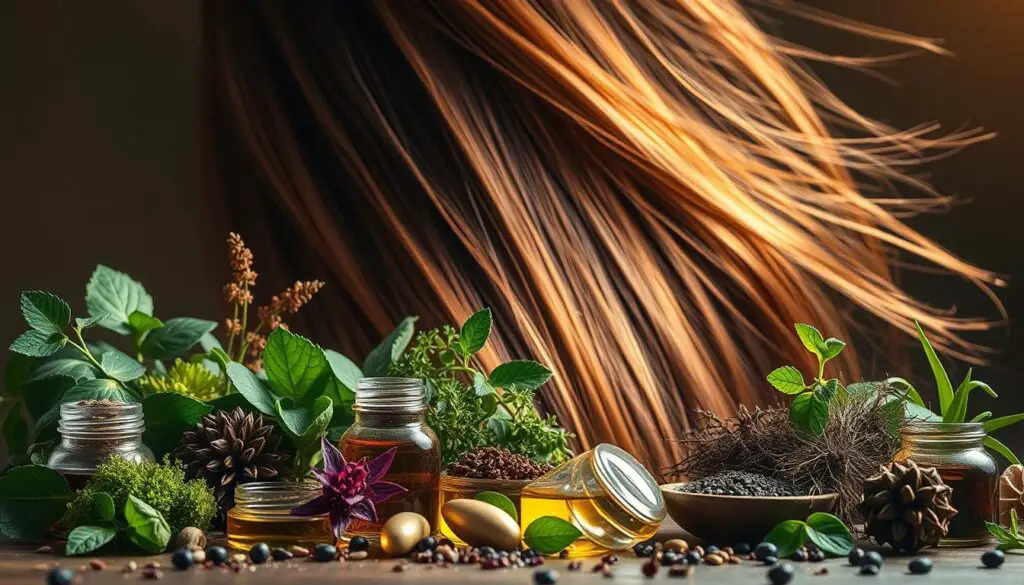
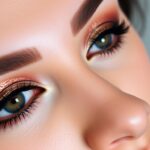
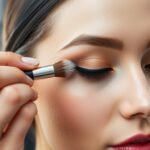
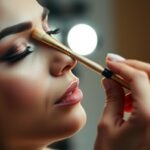



1 thought on “Hair Growth Tips for Longer, Thicker Hair”